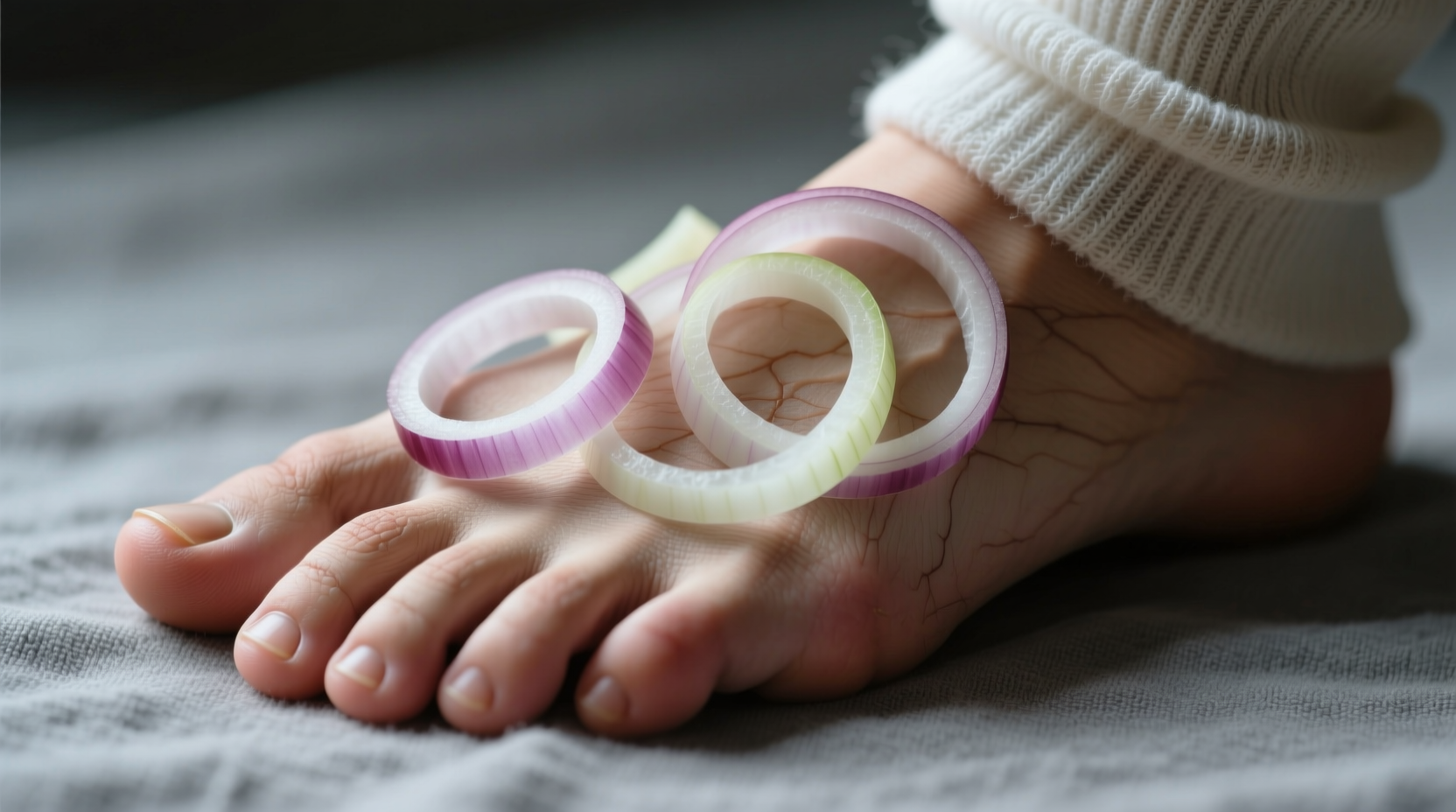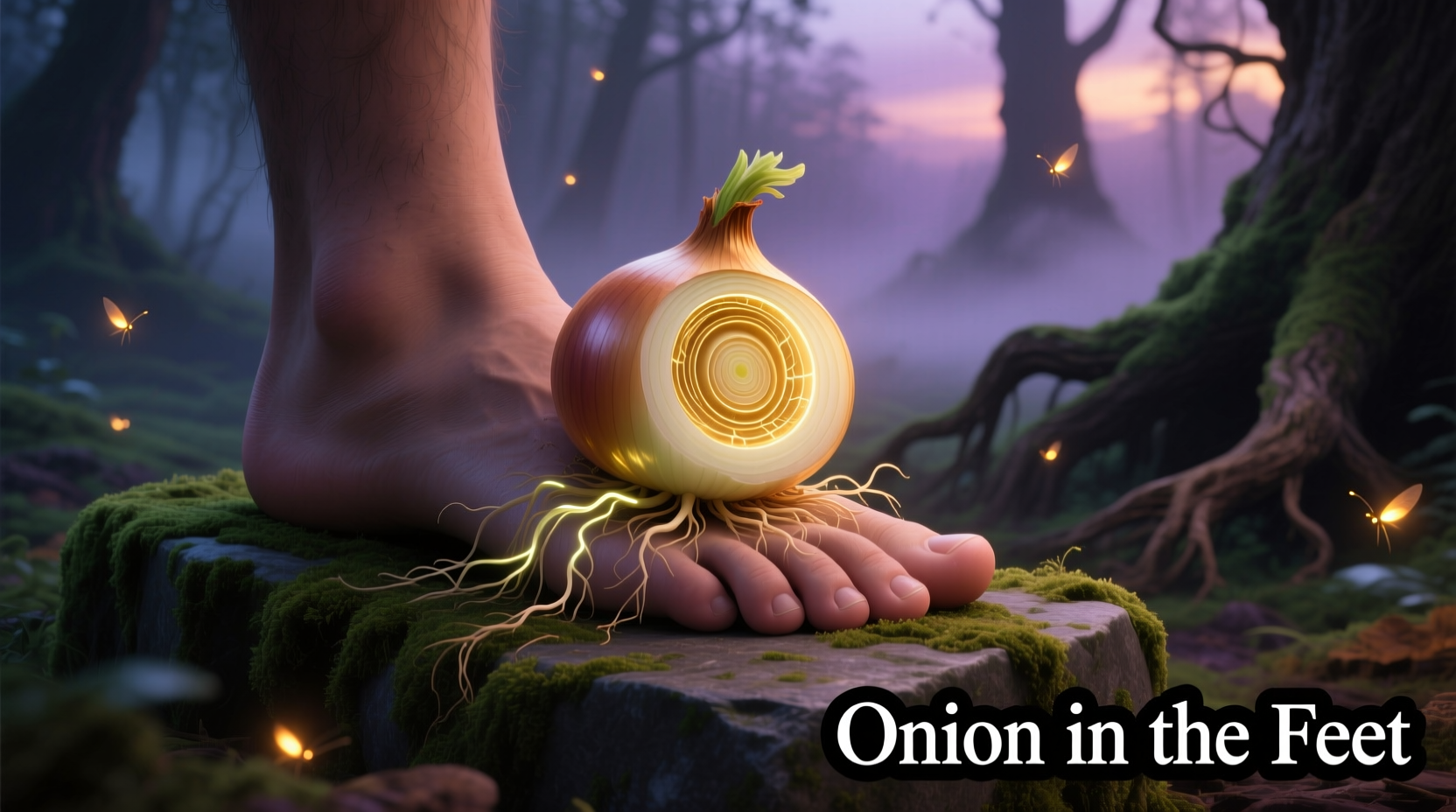For centuries, people have placed raw onions on the soles of their feet as a natural remedy for various ailments. If you've ever wondered whether this unusual practice actually works or why people continue this tradition, you've come to the right place. This comprehensive guide separates fact from fiction, exploring the historical context, claimed benefits, and scientific evidence (or lack thereof) behind the onion-on-feet remedy.
What Is the Onion-on-Feet Practice?
The onion-on-feet remedy involves placing slices of raw onion on the soles, typically secured with socks overnight. Proponents believe the onion's compounds absorb through the skin, drawing out toxins and providing various health benefits. This practice appears in multiple traditional medicine systems worldwide, though the specific applications vary by culture.
Historical Origins and Cultural Timeline
This folk remedy has roots stretching back centuries across different civilizations:
- Ancient Egypt - Onions were considered sacred and used medicinally, though direct evidence of foot application is limited
- Traditional Chinese Medicine - Some historical texts reference foot applications of pungent substances for balancing energy
- European Folk Medicine - 18th-19th century home remedy books occasionally mentioned onion poultices for various ailments
- Modern Resurgence - The specific foot application gained popularity through internet sharing in the early 2000s
Commonly Claimed Benefits
Supporters of this practice make several assertions about its effectiveness:
- "Draws out toxins" from the body
- Prevents or shortens cold and flu duration
- Reduces fever
- Improves sleep quality
- Boosts overall immunity
| Claimed Benefit | Scientific Evidence | Plausible Explanation |
|---|---|---|
| Detoxification | No evidence | Human body detoxifies through liver/kidneys, not foot absorption |
| Cold/Flu Prevention | No clinical studies | Placebo effect may influence perception of symptoms |
| Fever Reduction | No evidence | Cooling sensation might provide temporary comfort |
| Immune Boost | No evidence | Onion compounds don't enter bloodstream through feet |
What Science Says About Onion Absorption Through Feet
According to dermatological research from the National Institute of Arthritis and Musculoskeletal and Skin Diseases, the skin on the soles of feet contains thick stratum corneum (outer layer), making it one of the least permeable areas of the body for substance absorption. Unlike mucous membranes or thinner skin areas, the feet's skin evolved specifically to provide a protective barrier.
The National Center for Biotechnology Information confirms that transdermal absorption of compounds like those in onions is extremely limited through foot skin. Any compounds that might absorb would enter the local tissue but wouldn't systematically detoxify the body as claimed.
Safety Considerations and Limitations
While generally safe for most adults, this practice has important limitations:
- Skin sensitivity - Raw onions contain enzymes that can cause irritation or chemical burns with prolonged contact
- Diabetic concerns - People with diabetes should avoid this practice due to potential skin complications
- Children's skin - More permeable than adult skin, increasing risk of irritation
- False security - Relying on unproven remedies may delay seeking appropriate medical care
The American Academy of Dermatology specifically warns about onion-induced contact dermatitis, noting that "Allium species (onions, garlic) can cause irritant contact dermatitis with vesicle formation after prolonged exposure." 
Why Does This Practice Persist?
Despite lacking scientific backing, the onion-on-feet remedy continues to circulate for several understandable reasons:
- Placebo effect - Belief in a treatment can sometimes produce real, though temporary, symptom relief
- Anecdotal evidence - People report feeling better after using the remedy, often coinciding with natural recovery
- Cultural transmission - Traditional remedies often pass through generations regardless of efficacy
- Desire for natural solutions - Many prefer home remedies over pharmaceutical options
Evidence-Based Alternatives for Wellness
Instead of relying on unproven remedies like onion-on-feet treatments, consider these scientifically supported approaches:
- For immune support - Adequate sleep, balanced nutrition, and regular handwashing
- For cold/flu symptoms - Hydration, rest, and over-the-counter medications as needed
- For general wellness - Regular exercise, stress management, and proper nutrition
- For detoxification - Supporting your body's natural systems through liver-healthy foods and avoiding toxins
Conclusion: Tradition Meets Science
The onion-on-feet remedy represents an interesting intersection of traditional folk medicine and modern wellness culture. While placing onions on your feet is unlikely to cause harm for most healthy adults (beyond potential skin irritation), it also won't deliver the dramatic health benefits some claim. Understanding the historical context helps appreciate why such remedies persist, while scientific evidence guides us toward more effective wellness practices. If you're considering trying this remedy, do so with realistic expectations and never as a substitute for professional medical care when needed.











 浙公网安备
33010002000092号
浙公网安备
33010002000092号 浙B2-20120091-4
浙B2-20120091-4